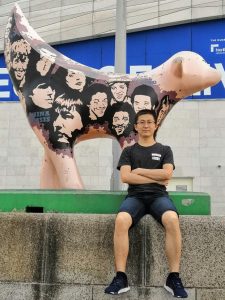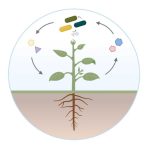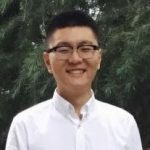Longsheng Zhao: The Plant Cell First Author

 Longsheng Zhao, co-first author of “Structural basis and evolution of the photosystem I–light-harvesting supercomplex of cryptophyte algae”
Longsheng Zhao, co-first author of “Structural basis and evolution of the photosystem I–light-harvesting supercomplex of cryptophyte algae”
Current Position: Postdoctoral fellow in State Key Laboratory of Microbial Technology, and Marine Biotechnology Research Center, Shandong University, Qingdao 266237, China.
Education: Ph.D in State Key Laboratory of Microbial Technology, Shandong University, Jinan, China.
Non-scientific Interests: music, movie, badminton, cooking
Brief bio: I got my bachelor’s degree in School of Life Science, Shandong University and doctorate in the group of Prof. Yuzhong Zhang, State Key Laboratory of Microbial Technology, Shandong University. During my Ph.D, I mainly focused on the native supramolecular architecture of photosynthetic membrane in red algae, including single-cell Porphyridium cruentum and multi-cell Polysiphonia urceolata and Porphyra yezoensis, using atomic force microscope (AFM). After I got my Ph.D, I went to UK and worked in University of Liverpool as a research associate in the group of Prof. Luning Liu. Currently, I’m working in State Key Laboratory of Microbial Technology, Shandong University as a postdoctoral fellow under the supervision of Prof. Yuzhong Zhang. With the help of Prof. Liu and Prof. Zhang, I studied the structural variability, coordination and adaptation
of cyanobacterial thylakoid membranes and cryo-EM structure of cryptophyte PSI–LHCI. We applied high-resolution AFM imaging to draw a landscape view of the native arrangement of membrane complexes in the thylakoid membranes from cyanobacteria. Our results provide insight into the heterogeneity, compartmentalization, and functional regulation of the cyanobacterial photosynthetic apparatus, which is extendable to other membrane systems in bacteria, chloroplasts and mitochondria. The naturally occurring organizational features of thylakoid membranes could be important considerations for the future engineering of artificial photosynthetic systems to underpin biofuel production. The unique cryptophyte PSI–LHCI structure provides a framework for delineating the mechanisms of energy transfer and quenching in cryptophyte PSI–LHCI and understanding the evolution of red lineage photosynthesis by secondary endosymbiosis.
姓名:赵龙生
职位:博士后
工作单位:山东大学微生物技术国家重点实验室
工作简介:博士毕业于山东大学微生物技术国家重点实验室,2017年获得博士学位后,进入山东大学微生物技术国家重点实验室开展博士后研究工作。长期从事藻类光合作用的研究,以原子力显微镜藻类光合膜的超分子结构及调控机制,以冷冻电镜单颗粒分析技术研究藻类光系统超复合物结构。旨在揭示光合作用的结构基础及调控机制,为设计高效的光合作用系统以及光能生物转化系统等合成生物学研究提供理论基础。研究工作从纳米水平上展示了蓝藻光合膜上光合复合物的天然结构及相互结合方式,并解释了光合膜结构和功能的光适应调节机制。以此为基础,进一步研究了快速生长生态型蓝藻进行高效光合作用的光合膜超分子结构基础。利用冷冻电镜技术,解析了隐藻光系统I的原子分辨率结构,揭示了其能量转化机制,并为PSI的结构进化提供了重要线索。



